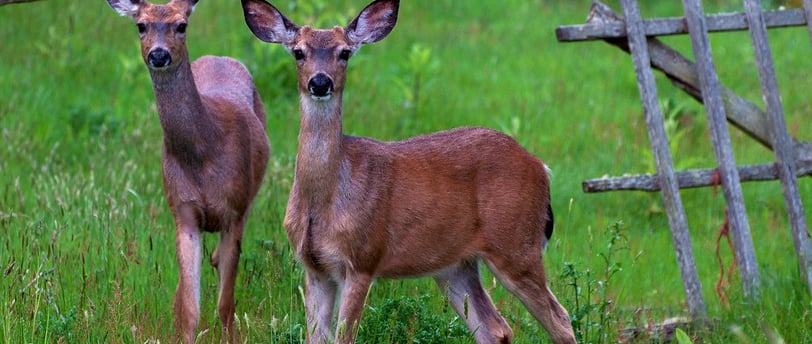Gardening at the Edge: The Quiet Search for Deer-Resistant PlantingYour blog post
Looking for deer-resistant shade plants? Explore how to design a beautiful, resilient garden even in deer-prone areas. Practical advice, plant suggestions, and gentle encouragement await.
DEER RESISTANT SHADE PLANTS
Marcus Bergin
5/24/20252 min read


You know you’re gardening in deer country when your morning stroll turns into a post-mortem. The hydrangea that showed such promise yesterday? Gone. The hosta that was just starting to unfurl? Reduced to a nub, as if nature had pressed delete. It’s not vandalism, exactly, more like an unspoken conversation with the wild.
And the truth is, we’re the ones who have moved closer to them.
As we push our homes and gardens deeper into wooded landscapes, we also step further into the lives of deer. Graceful, gentle, and maddeningly hungry, they are both a joy to see and a challenge to live alongside. For shade gardeners, especially, where soft textures and tempting foliage abound, this can feel like an impossible balance.
But maybe the answer isn’t in trying to beat the deer. Maybe it’s in learning how to share the space.
A Garden the Deer Might Decline
The idea of a “deer-proof plant” is a comforting one, but let’s be honest: deer don’t read plant labels. What’s ignored in one garden might be gobbled up in another. Local habits, seasonal hunger, and even individual preference all play a part.
Still, some patterns emerge.
Ferns: Their tough, leathery fronds tend to be unappetising. Polystichum, Dryopteris, and Osmunda are particularly reliable.
Brunnera macrophylla: Often called Siberian Bugloss, it brings heart-shaped leaves and sky-blue flowers—and is usually left alone.
Epimedium: With wiry stems and delicate blooms, it’s a true shade garden hero, and usually unbothered by nibblers.
Foxgloves (Digitalis) and Hellebores (Helleborus): Toxic to deer, and a stunning addition to any shady border.
It’s not just about one plant, though, it’s the layering that matters. Mixing textures and scents. Creating confusion. Tucking tender favourites in among more resilient neighbours. It’s less a fence and more a suggestion.
Designing with Discretion
Deer-resistant gardening isn’t a checklist. It’s a language. A slow exchange between you and the landscape. And like all good conversations, it takes time to understand.
Start by observing what the deer in your area do and don’t touch. Note which plants survive untouched season after season. And consider:
Fragrance and Texture: Fuzzy, aromatic, or bitter-tasting leaves are often avoided.
Plant Placement: Use resilient plants as a buffer zone, closer to the woods, or around the edges of the garden.
Distraction Planting: Some gardeners plant things like clover or wild grasses as sacrificial offerings.
Of course, physical barriers help, fencing, scent deterrents, or even a well-placed motion light. But there’s a quiet satisfaction in finding a planting rhythm that works with nature rather than against it.
A Garden in Conversation
Here at Dappled Gardening, we believe in working with the light and the life around us. Deer are part of that story. So rather than aiming for perfection, perhaps we aim for coexistence.
We’d love to hear your story. What plants have survived the deer’s nightly visits in your garden? Which ones have you reluctantly let go of? Share your experience in our Shade Gardening Facebook group or drop us a message through the contact page.
Image: Charlie Barrows